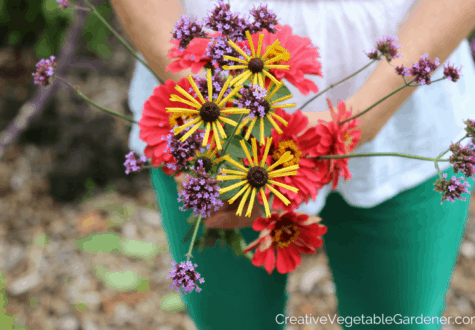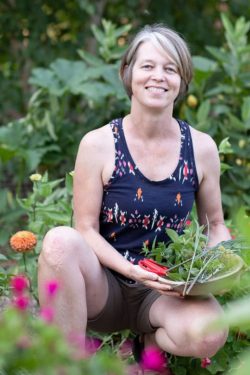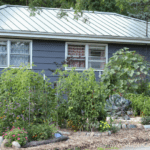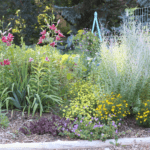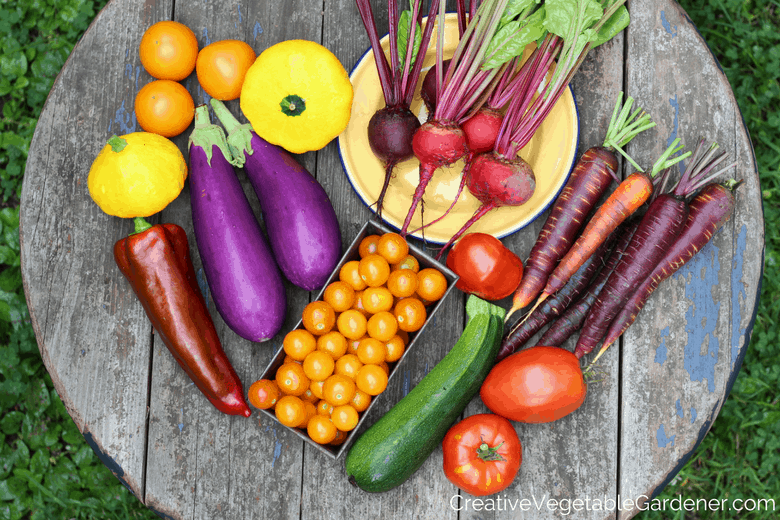
Do you feel like you’re getting a lot back for every minute you spend working in your vegetable garden? I’m not just talking about the food you harvest. I’m referring to the knowledge you gain, the skills you build, the joy you experience, and the beauty you cultivate.
Organic vegetable gardening is a lot of work. It’s joyful work for sure, but it still takes up precious life energy and time in our hectic lives.
And my experience from working with thousands of gardeners over the years is that most gardeners, whether they’re new to gardening or have had their hands in the soil for forty years, have plenty of room for improvement in at least a few areas.
Are you motivated to plant and harvest your vegetables on time, not falling behind and missing opportunities throughout the season?
Are you delving more deeply into the craft of gardening, building your skills, and becoming a better gardener each year?
Does your garden produce an abundant harvest of healthy and nutritious produce that’s a pleasure to cook with and will help sustain you and your family?
Are you shaking things up by experimenting and trying new things?
Do you feel inspired and joyful when you’re in your garden? Are you having fun?
Is your garden bursting with color and beauty? Do you walk by your garden and love how it looks?
If you answered no (or a lukewarm yes) to any of these questions, join the crowd! Most of us are missing elements from our gardening experience that if present, would allow us to revel in our favorite pastime in a whole different way.
Gardening isn’t a one-dimensional experience that’s only focused on the amount of food you grow. While the vegetables we harvest are a big part of the pleasure of growing our own food, our gardens can also feed us on a much deeper level if we let them.
A full and vibrant organic vegetable gardening experience allows us to tap into our creativity, express our personalities, and hone our craft one season at a time so that gardening eventually becomes a part of our life that we can’t imagine living without.
If you’re looking for ways to deepen the joy and satisfaction you get from the time you invest in your garden, here are five ideas to get you started on the journey.
5 Ways to Get More From Your Organic Vegetable Gardening Experience
#1: Create a plan to stay on track.
One of the best ways to stay motivated to take action is to have a plan. When you’re organized you make fewer mistakes and you don’t fall behind and miss opportunities throughout the season. The good news is that you don’t need to sit down for hours and map out every single thing you’re going to do every week throughout the season. You can keep it very simple!
Creating a personalized planting calendar for your location will ensure you know what to plant and when to plant it every week of the season. My planting calendar is something I refer to frequently to make sure I’m keeping up with plantings so I’m not missing the window on some of my favorite veggies.
And if you’re a more experienced gardener who’s ready to start experimenting with succession planting, a planting calendar is perfect for this, too.
#2: Pay attention to what you plant and keep records.
The key to becoming a more skilled gardener over time is to build on your successes so you’re getting better results each year. The first step to having more success is to be picky about what kinds of plants and seeds you’re planting in your garden each season. I don’t recommend going to the big box store and purchasing seeds and plants. There’s no guarantee the varieties they’re selling will do well in your garden.
What variety you plant can be the difference between success and failure in your garden, so it’s very important to select the right ones for your climate. This may involve a bit of trial and error over time, but the best place to start is to order seeds from a reputable company.
The second step is to keep simple records in your garden of what you plant and when you plant it. This will help you begin to evaluate the varieties you choose and the timing of your plantings so you can tweak them as you go. Paying attention allows you to get rid of the things that aren’t working and build upon the things that are.
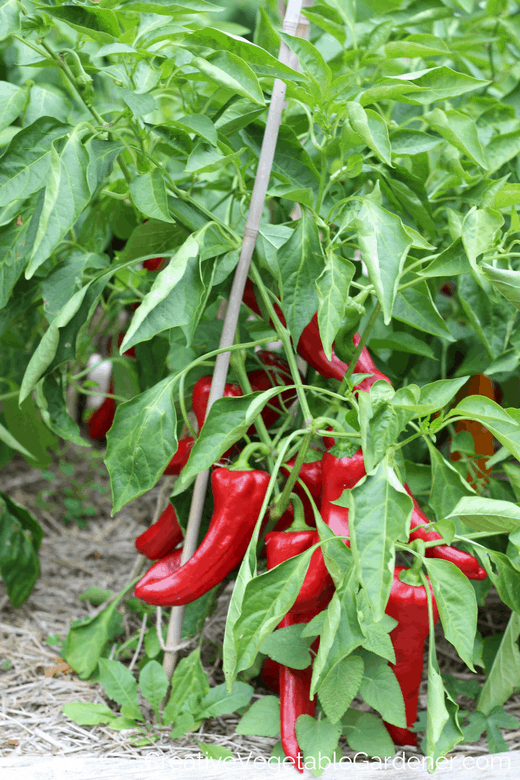
My healthy red pepper plants produce between 12-15 fruits per plant!
#3: Build healthy soil.
The tangible fruit of the labor we invest into our gardens is the harvest baskets full of beautiful and delicious produce we haul into our kitchens and turn into healthy meals for our families. But, without healthy soil, our plants aren’t able to fend off pests and disease, they don’t grow to full size, and they don’t produce the maximum amount of produce they’re designed to produce.
The vegetable plants you grow demand a high level of nutrients from the soil in order to thrive. You need to be constantly replenishing and building these nutrients if you want to maintain a healthy garden. The best approach is a diverse one: adding organic fertilizers before planting, amending your soil with compost and mulch to build up the organic matter, and growing cover crops to add trace nutrients.
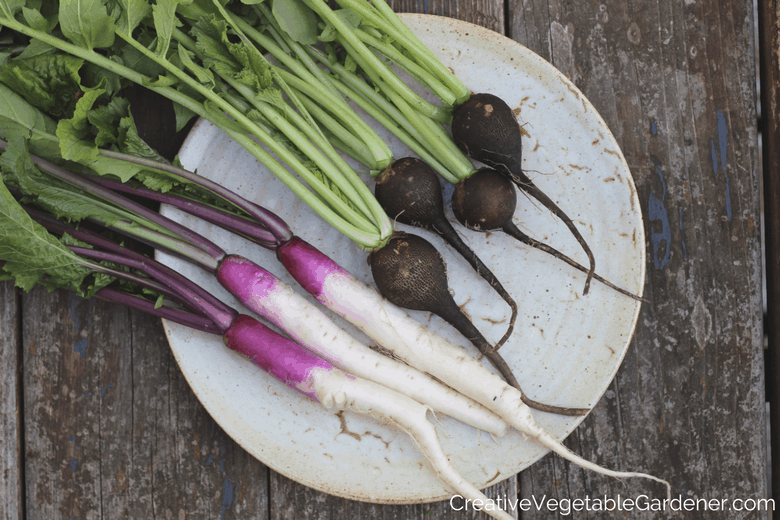
Last year I grew both Nero Tondo black radishes and Hinona Kabu turnips for the first time.
#4: Have fun and try new things.
Shaking things up in your garden helps you stay inspired and prevents you from falling into a gardening rut. Those of us who have been gardening for many years can unconsciously repeat the habit of planting the same things year after year and doing things the same way we’ve always done them.
When you experiment and get creative in your garden, you’re more excited to get out there every day and you discover new things that delight you. This year, pledge to try growing a vegetable you’ve never planted in your garden before, or add a few new varieties of a well-loved vegetable to your garden plan.
You could also add a new skill to your gardening toolkit by learning an entirely new facet of gardening, cooking, or food preserving such as fermentation, seed starting, growing microgreens indoors, beekeeping, mushroom growing, or season extension using cold frames and low tunnels. What new things peak your interest and get you excited when you think about them?

#5: Focus on adding beauty to your garden.
Every time I walk by my vegetable garden or look at it from my living room window my heart does a little flip-flop of joy at the beauty. This deepens the pleasure I get from gardening by adding a layer of joyfulness that goes beyond the food I’m growing.
For too long many people have looked at their vegetable gardens as utilitarian spaces that don’t deserve a central role in their landscape. I’m here to tell you that you absolutely can have a garden that grows a lot of food and is gorgeous to look at.
There are lots of ways to add beauty to your garden such as planting flowers, growing vertically on trellises, adding art, and playing with texture and planting patterns.
This season, I’d love to support you in getting more of whatever you desire from your garden – more beauty, joy, knowledge, food, relaxation, connection with nature, inspiration, or better results. Over the next few weeks, we’re going to delve more deeply into these five ways to transform your organic vegetable gardening experience into something that’s even better than it is now! So, stay tuned…



